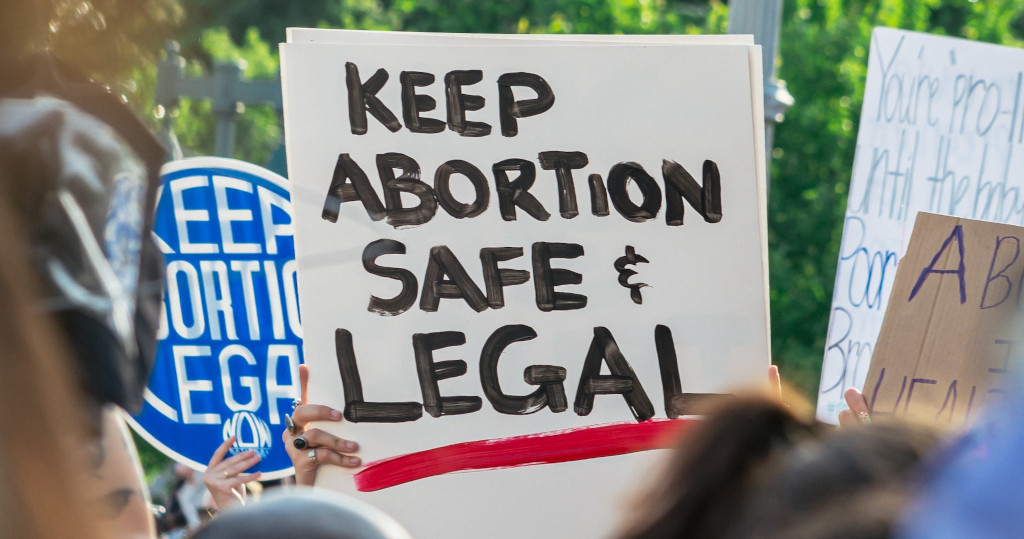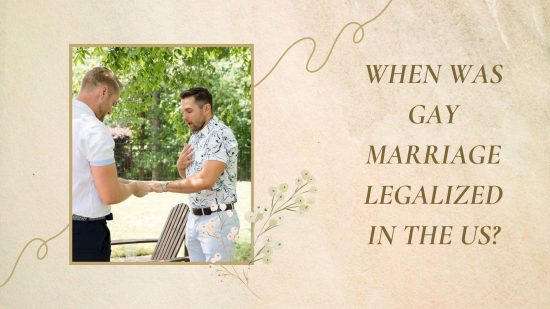Table of Contents
ToggleSources
- https://www.supremecourt.gov/opinions/12pdf/12-307_g2bh.pdf
This is the official Supreme Court opinion for United States v. Windsor, which struck down the Defense of Marriage Act (DOMA) in 2013, a key event mentioned in the blog post. - https://www.supremecourt.gov/opinions/14pdf/14-556_3204.pdf
This is the official Supreme Court opinion for Obergefell v. Hodges, the landmark 2015 case that legalized same-sex marriage nationwide, a central topic in the blog post. - https://www.congress.gov/bill/104th-congress/house-bill/3396
This is the official text of the Defense of Marriage Act (DOMA) from Congress.gov, providing authoritative information about the 1996 law mentioned in the post. - https://www.history.com/topics/gay-rights/gay-marriage
This History.com article provides a comprehensive overview of the history of same-sex marriage in the U.S., aligning with the timeline and events discussed in the blog post. - https://www.pewresearch.org/short-reads/2022/11/28/same-sex-marriage-around-the-world/
This Pew Research article provides statistical and demographic data about same-sex marriage, offering context about public opinion and legal status that supports the post's discussion.
Key Points
- Same-sex marriage was federally recognized in the US in June 2013 after the Supreme Court struck down laws barring it.
- The journey for equal marriage rights began in the 1980s, with significant activism like the 1987 National March on Washington for Lesbian and Gay Rights.
- The 1993 case Baehr v. Miike in Hawaii was the first to question the constitutional right to marry for same-sex couples.
- The Defense of Marriage Act (DOMA) in 1996 defined marriage as between a man and a woman, denying federal recognition to same-sex unions.
- Massachusetts became the first state to legalize same-sex marriage in 2004 (Goodridge v. Department of Public Health).
- California's legalization of same-sex marriage in 2008 was followed by Proposition 8, which banned it, but was later deemed unconstitutional.
- In 2012, same-sex marriage became a major political issue, with states like Maine, Maryland, and Washington legalizing it via popular vote.
- The 2013 Supreme Court case United States v. Windsor repealed DOMA, allowing federal recognition of same-sex marriages.
- The 2015 Obergefell v. Hodges ruling required all states to recognize same-sex marriages performed in other states.
- Concerns remain about the future of same-sex marriage rights, especially after the overturning of Roe v. Wade in 2022.
Summary
Same-sex marriage was legalized nationwide in the U.S. in 2015 after a long legal battle, culminating in the Supreme Court's *Obergefell v. Hodges* ruling, which required all states to recognize such unions. The journey included key milestones like the repeal of the Defense of Marriage Act in 2013 and state-level victories, though concerns remain about future challenges to marriage equality. The fight for equal rights reflects ongoing political and social divides across the country.
Today, same-sex couples have the right to marry and have that recognized across the United States. They can enjoy the same wedding ceremonies and marital perks as heterosexual couples.
When was gay marriage legalized in the US?
The simple answer is June 2013, when the Supreme Court struck down all laws barring same-sex marriage from federal recognition.
We can’t focus on one date when considering same-sex marriage legalization in the United States, as the journey toward legalization is long and complicated.
Questioning the Equality and Meaning of Marriage Laws in the 1990s
The start of the journey for equal marriage rights for all couples began in 1987 with the 2nd National March on Washington for Lesbian and Gay Rights.

Couples had questioned the laws and lack of equality for homosexual couples for decades, but this was when there was a more direct request for same-sex marriage.
Naturally, the march stirred up tension and discussions on both sides.
On one side, there were those questioning the current laws and opportunities for same-sex unions in the United States.
A landmark moment here came with the case of Baehr v. Miike in Hawaii in 1993. This was the first time a state supreme court questioned the constitutional right to marry.

Get Smarter on US News, History, and the Constitution
Join the thousands of fellow patriots who rely on our 5-minute newsletter to stay informed on the key events and trends that shaped our nation's past and continue to shape its present.
However, opposition to the idea also led to a tightening of laws. In 1996, President Clinton signed the Defense of Marriage Act (DOMA), which would later be cited in cases opposing state laws favoring same-sex marriage.

This act protected the idea of traditional marriage between men and women and denied recognition of any same-sex union.
States Begin To Make Changes to Their Laws in the 2000s
Achieving legalization began with important legislative changes and symbolic moments in states and cities.
Not all of these would last, as progression was sometimes challenged and overturned. However, these state-level laws and changes were significant to those previously unable to get a marriage license or participate in a legal marriage ceremony.

On May 17th, 2004, Massachusetts became the first state to license and recognize same-sex marriages (Goodridge v. Department of Public Health).
They concluded that the marriage rights of same-sex couples being denied violated the Massachusetts Constitution.
In 2008, Connecticut enacted laws for gender-neutral marriage legislation.
Vermont was the first state to legalize same-sex marriage through legislative means (2009).
New York would then sign its Marriage Equality Act in 2011.
The Roller Coaster of Californian Law
California is an excellent example of the highs and lows endured over this century for gay rights.
In early 2004, San Francisco began issuing licenses to same-sex couples, even though no state law was in place.

They were eventually stopped by the California Supreme Court but had helped around 4000 couples by this point.
A few years later, in 2008, California finally passed a state law to allow and recognize same-sex marriage.
However, the backlash against this legislation preempted the creation and passing of Proposition 8, banning same-sex marriage once again. Soon after, this was deemed unconstitutional.
Same-Sex Marriage Became a Massive Political Issue in 2012
During the presidential race, the fight for the legalization of gay marriage gained greater national attention in 2012.
The Republicans leaned towards the protection of traditional marriage and bans on same-sex unions, while the Democrats came out in favor of legalization and better protections.
Proposals for state laws went to the ballot in some states.

These opposing views led to a divide between states, with some changing their laws in favor of same-sex marriage and others strengthening same-sex marriage bans.
For example, Maine, Maryland, and Washington legalized it through popular vote.
Meanwhile, North Carolinians voted to approve a constitutional amendment to ban all forms of same-sex union.
Significant Supreme Court Rulings Allow for Federal Protection for Gay Marriage
At this point, the issue of gay marriage and recognition of same-sex unions remained at a state level.
You may have had plenty of freedom to marry in your home city, but it wouldn’t be recognized or permitted if you moved to some other state. In 2013, this changed with the first major federal law.

In June 2013, a landmark United States Supreme Court ruling came into force following the United States v. Windsor case.
This repealed the law barring federal recognition of same-sex marriage, finally allowing for nationwide consistency.
The ruling stated that the ban was “a deprivation of the equal liberty” that is protected by the Fifth Amendment.
A couple of years later, same-sex marriage received much greater protection, following the case of Obergefell v. Hodges, on June 26th, 2015.
Here, the Supreme Court went deeper with its powers to ultimately strike down any state ban still in place.
Furthermore, all states had to honor the marriages that took place in other states.
The Future of Same-Sex Marriage Recognition in the US
The ruling of Oberfegell v. Hodges should have been the end of the line for the fight for marriage equality. However, following the overturning of Roe v. Wade, there are concerns that the same could happen here.

Those that want a return to the old days of DOMA, including some on the Supreme Court, could make that happen.
This journey shows that nothing is ever simple when fighting for equal rights in America. People’s opinions in one state may differ greatly from those across the border, which then reflects in conflicting state legislation.
Federal rulings go a long way to creating progress and recognition across the nation, but even then, things are not 100% perfect.
For a poll that ConstitutionUS.com ran on same-sex marriage, please go to:
When Was Gay Marriage Legalized in the US? Quiz
Frequently Asked Questions
When was same-sex marriage legalized in the United States?
Which state was the first to legalize same-sex marriage?
What was the Defense of Marriage Act (DOMA)?
What was the significance of the Obergefell v. Hodges case?
Are there concerns about the future of same-sex marriage rights in the US?
How useful was this post?
Click on a star to rate it!
Average rating / 5. Vote count:
No votes so far! Be the first to rate this post.
We are sorry that this post was not useful for you!
Let us improve this post!
Tell us how we can improve this post?







